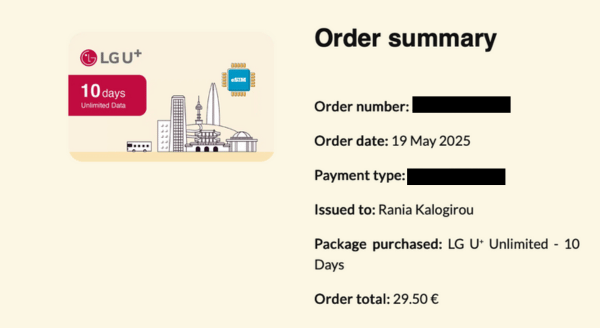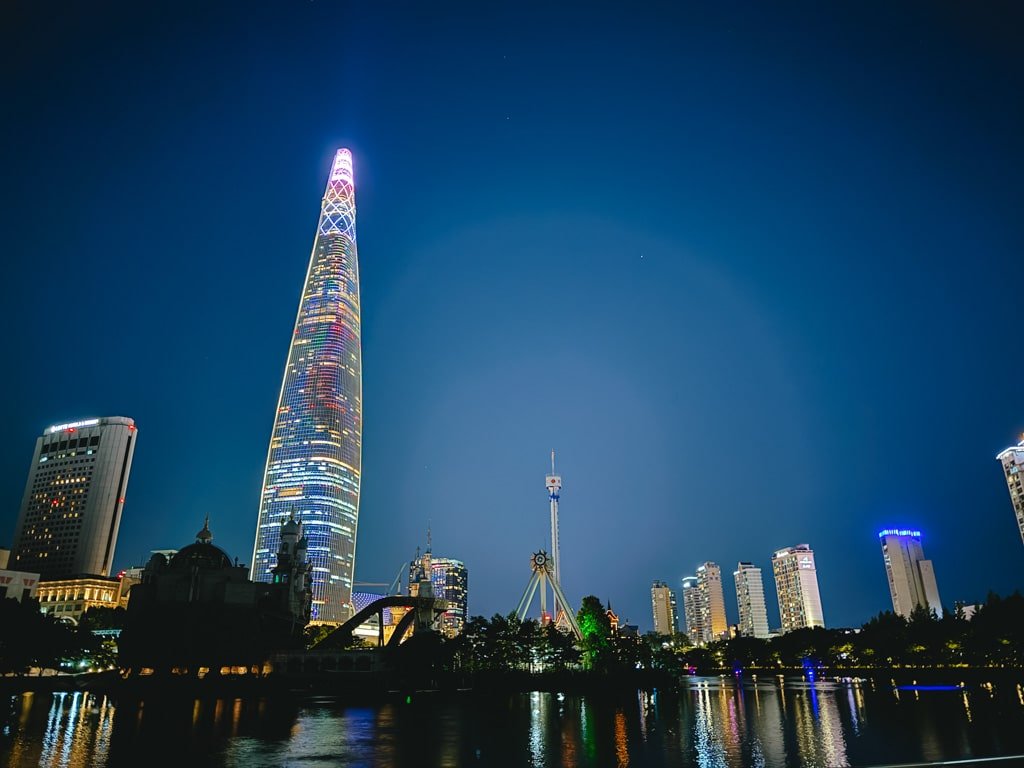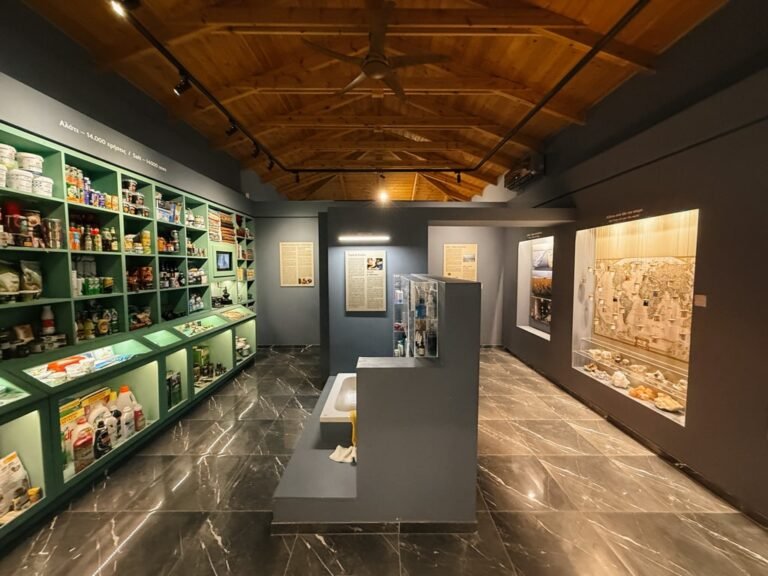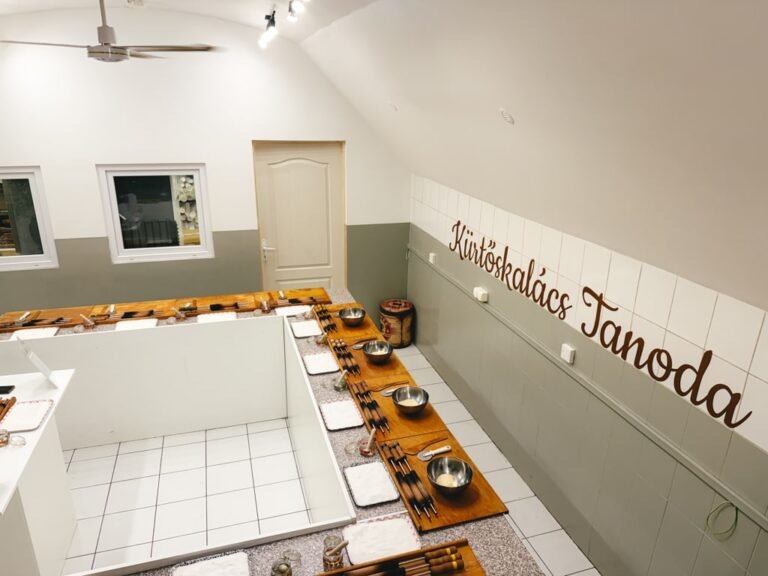This article may contain affiliate links. When you purchase something we recommend, we make a small commission. You don’t pay anything extra. 💘 For more details, check out our Terms of Use page.
South Korea is one of those places where having a reliable internet connection can make or break your trip — so figuring out your eSIM or SIM card options is worth doing before you land.
Despite being one of the most technologically advanced countries in the world, South Korea runs on its own set of apps and systems. If you want to navigate easily and order taxis or food, you’ll need things like Naver Maps and Kakao Taxis— and those only work well if you’re online.
Yes, free Wi-Fi is everywhere — on the subway, in cafés, even on buses — but it’s not literally everywhere. Step outside Seoul into smaller cities or rural areas, and having your own data quickly goes from “nice to have” to “essential.”
Since I travel for work and need to be connected pretty much 24/7, I decided to test a few e-sim options. After a lot of research (and a bit of trial and error), here’s what I found and what I’d recommend depending on your travel style.
Table of Contents
ToggleHow Mobile Networks Work in South Korea
South Korea only has three main cell networks — SK Telecom, KT, and LG U+. Every SIM card or eSIM you buy, whether online or at the airport, ultimately runs on one of these networks. The difference comes down to which agent you buy from and what packages they offer.
Some agents sell more flexible plans with unlimited data. Others have cheaper options but with speed caps, and daily data limits. The tricky part is that the branding on the package doesn’t always make it obvious which network you’re on or what the fine print says.
That’s why you’ll see such a variety of offers online and in person — it’s not that there are dozens of networks to choose from, just different resellers bundling the same network access in different ways.
I personally used LG U+ through Airalo on my last trip, but I also had another option I’d recommend depending on your travel style and how much data you need.
My Experience: LG U+ Through Airalo
Before landing in South Korea, I downloaded a few e-sim app options and chose to go with an Airalo eSIM on the LG U+ network. I chose their unlimited plan because I knew I’d be working and need to jump on meetings/call while traveling.
A couple of things to know:
- I didn’t get 5G connectivity — only LTE. That’s on me for not checking before I bought, but it’s worth pointing out. There are two options. The main problem with LTE was that I couldn’t reliably Facetime (it wouldn’t connect) or call on Messenger.
- Unlimited data here still means there’s a daily high-speed cap (mine was 3GB) before speeds slow down.
- The total cost for 22 days was just over $55 USD, which I personally find expensive compared to other parts of Asia.
That said, it was still the cheapest option available to me at the time — the other unlimited eSIMs I looked at were even pricier. Coverage was excellent everywhere I went: in the middle of Seoul, on the KTX to Gyeongju, and even in more remote spots.

Physical LG U+ SIM at the Airport (with T-Money Card)
If you’d rather not mess around with eSIM setup, you can just pick up a physical SIM when you land at Incheon. It’s practically the same data packages you’ll see online, just through a different agent — but here, you also get a T-Money card bundled in.
That alone makes it worth considering, since you’ll probably end up buying a T-Money card anyway for subways, buses, and even some convenience store purchases. The fastest and easiest way is to grab it right at the airport counter — this is what a few people in my group did, and they recommended it.
Here is where to purchase a pre-paid Sim and T-Money Card from Incheon Airport.
It also means you have someone walk you through setting it up properly (and yes, they can usually do it in English), which is nice if tech isn’t your thing. Plus, for longer trips where you might actually need a local number, this route makes even more sense.
Pre-book e-sim card for Incheon Airport:
Airport Pick-Up vs Convenience Store SIMs
You can technically buy a SIM or T-Money card at a convenience store once you’re in the city, but if this is your first time in Korea, it can get confusing fast.
For starters, topping up a T-Money card at a store requires cash, which means stopping to exchange money or finding an ATM. Then you’ll need to buy and load the card, set up your SIM or eSIM, and still figure out transport — all after a long flight.
When I landed at 22:00, I had to rush to catch the last AREX Express Train into central Seoul. That meant tracking down an ATM, buying a T-Money card, loading it, and activating my eSIM just so I could navigate. It was a lot to juggle.
With the two-in-one SIM + T-Money card package you get at the airport, all of that is done in one go — someone sets up your SIM, hands you your transport card ready to use, and you’re on your way. In hindsight, it would have been cheaper and a lot less stressful.
Do You Really Need a Local Number in Korea?
For most short trips, a data-only plan works fine — you can use apps like KakaoTalk or WhatsApp to message and call. But if you’re staying longer, booking restaurants that require a Korean number, or signing up for certain delivery or taxi apps, having one can save you a lot of frustration. Physical SIMs at the airport usually include a local number, while many eSIM plans don’t. But pay attention to incoming and outgoing calls if you plan on using it a lot.
Bonus: My Favorite Way to Leave Incheon Airport
Since you’re already sorting out your SIM card and T-Money situation, it’s worth thinking about how you’ll actually get into the city. I’ve done the AREX Express Train (fast but not door-to-door), a regular taxi (expensive for the distance), and the limousine bus — which I booked by accident once and then ended up loving.
The limousine bus is more affordable than a taxi, has plenty of space for luggage, and drops you at convenient spots across the city like Myeongdong, Gangnam, City Hall, and Dongdaemun. It’s also a surprisingly fancy welcome into Korea — clean, comfortable, and quiet. Only issue is spots during the day might feel up fast.
The routes can be a little confusing at first, but if you haven’t figured out Naver Maps yet (it can take a moment), it’s still an easy option to manage. There even USB ports to charge electronics, and they dimmed the lights so passengers could relax. Since it was past 23:00, it felt like the perfect wind-down after a long day.
You can book tickets in advance through Klook or just buy them at the bus kiosks outside the terminal. The easy part is that you can pay with your T-Money card, so if you’ve already sorted that at the airport, you can skip the ticket counter and head straight to boarding — which makes the whole process much faster.
This time, I was staying at Lotte Hotel, and the bus dropped me just a five-minute walk from my accommodation. For me, it’s one of the most stress-free ways to arrive in Seoul without breaking the bank.
And since you are here, you might as well bookmark the Spa on Air option at Incheon, since you might want to use it as a place to shower and sleep during a long layover or when leaving the country.
Book the limousine bus here:
ESSENTIAL INFORMATION
Must Know When Visiting South Korea
- Emergency: Dial 112 for police and 119 for fire or ambulance services. These lines are available 24/7 and usually offer English-speaking support.
- Language: English is spoken in most tourist areas and by younger Koreans, though it’s less common in rural towns. It’s helpful to learn a few basic phrases like “Annyeonghaseyo” for hello, “Kamsahamnida” for thank you, and “Joesonghamnida” for sorry. For live translation help, download Papago (by Naver).
- Navigation: Google Maps and Apple Maps do not work reliably for directions in Korea. Instead, download Naver Map or KakaoMap. Both offer accurate public transport, driving, and walking directions, and have English-language support built in.
- Water: Tap water is safe to drink across South Korea, though many locals still prefer bottled or filtered water. Most hotels and guesthouses will either provide bottled water or have a filtered dispenser available.
- Driving: Cars drive on the right-hand side in Korea, and an International Driving Permit (IDP) is required for tourists. Most traffic signs are in both Korean and English, but city driving can be fast-paced and stressful, especially in Seoul. Book your rental car with Discover Cars for the best rates and comparisons across all major and local companies.
- Accommodation: Booking.com is the most convenient option for finding hotels, hostels, guesthouses, and traditional hanok stays across Korea. Many listings include free cancellation, no prepayment, and access to a reliable rewards system for frequent travelers.
- Islands: South Korea has several beautiful islands to explore, including Jeju, Ulleungdo, and Geoje. Jeju is best reached by domestic flight, while others require ferries from mainland ports. You can use 12Go Asia or check directly with ferry operators to plan your route.
- Activities: There’s no shortage of things to do in Korea, from exploring palaces, to color analysis experiences and traditional markets to joining food tours, hiking, or even staying overnight at a Buddhist temple. For hassle-free bookings with verified reviews, use Get Your Guide to arrange activities in advance.
- Public Transport: Korea’s public transportation is fast, efficient, and easy to use. Major cities like Seoul and Busan have extensive subway networks, while intercity travel is best done using KTX high-speed trains or long-distance buses. As soon as you arrive, get a T-money card for easy access to subways, buses, and even taxis. You can also purchase a SIM card and T-money package online or at the airport to stay connected and ready to travel from the moment you land.
- Domestic Airlines: Korean Air and Asiana Airlines are the main full-service carriers, while Jeju Air, T’way, and Air Seoul offer low-cost domestic flights. Jeju Air is a popular and budget-friendly option, especially for trips to Jeju Island. If you’re collecting points, Korean Air’s SkyPass is the most established loyalty program.
- Taxi: Instead of flagging taxis on the street, use the Kakao T app to book one. It’s reliable, easy to use, shows price estimates, and allows you to pay in-app. While many taxis now accept cards, it’s still a good idea to carry a bit of cash just in case.
- Culture: Korean culture emphasizes respect, quietness, and social harmony. It’s customary to remove your shoes when entering homes or traditional accommodations. Public transport tends to be quiet, and loud talking is generally discouraged. Shops and restaurants usually stay open late and operate seven days a week, but keep in mind that museums, palaces, and some attractions are often closed on Mondays. Major holidays like Chuseok or Lunar New Year (Seollal) are times when many Koreans travel, and during those days, transportation and services may be limited.




